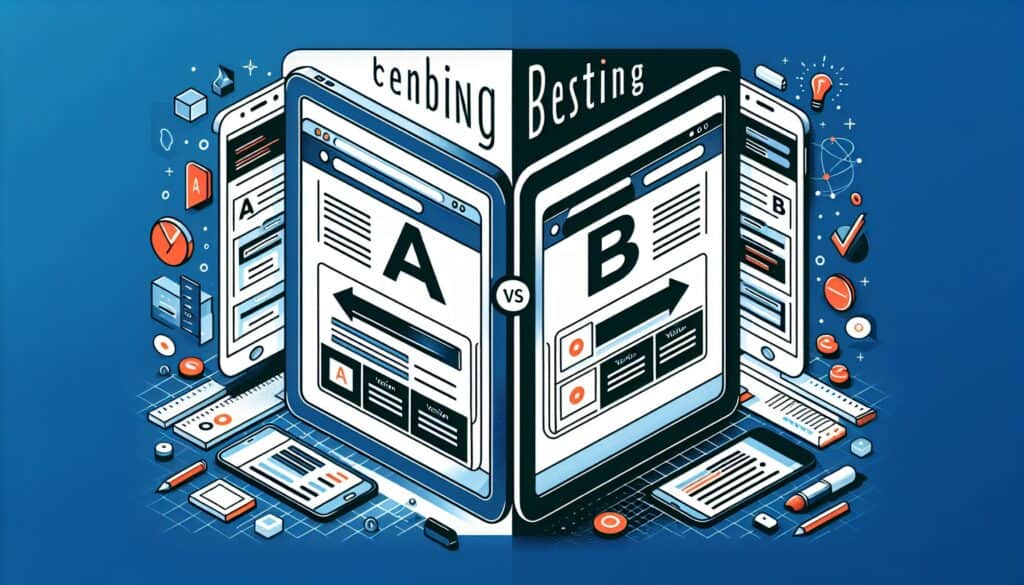A method of comparing two versions of a webpage, app screen, email, or other 营销 asset (Version A and Version B) to determine which one performs better in achieving a specific goal (e.g., higher conversion rate, more clicks).
- 方法: 工程, 质量
A/B 测试

A/B 测试
- A/B 测试, 持续改进, 转换率, 數位行銷, 迭代开发, 统计分析, 测试方法, 用户体验(UX), 用户界面(UI)
目标
如何使用
- Users are randomly shown either Version A or Version B. Their interactions are tracked, and statistical analysis is used to determine if there is a significant difference in performance between the two versions for a given metric.
优点
- Provides data-driven insights into what works best for users; Allows for iterative improvements based on evidence rather than intuition; Can lead to significant improvements in key metrics.
缺点
- Requires sufficient traffic/users to achieve statistically significant results; Testing too many variables at once can be confusing; External factors can sometimes influence results; Focuses on incremental changes, may not lead to radical innovation.
类别
- 客户与营销, 经济学, 产品设计
最适合:
- Optimizing web pages, app interfaces, email campaigns, and other digital experiences to improve user engagement and conversion rates.
A/B testing finds extensive application across various sectors, particularly in digital marketing, e-commerce, and software development, where businesses seek to enhance user experiences and drive higher conversion rates. In web design, this methodology is often employed during the early stages of user interface (UI) development, enabling designers and developers to understand user preferences in real time. Marketers frequently harness A/B testing in email campaigns to fine-tune subject lines, content, or call-to-action buttons, allowing them to identify which elements resonate most with their audience. Its utility extends to mobile application development, where it helps to evaluate different layouts or feature functionalities before launch. Participants in A/B testing typically include product managers, UX designers, data analysts, and developers, all of whom collaborate to design experiments, set performance metrics, and analyze results. Successful implementations rely on pre-defined hypotheses and well-structured test groups to ensure statistical validity. As businesses accumulate more data through iterative testing, they can implement informed decisions that lead to better customer satisfaction, higher retention rates, and increased revenue, establishing a robust feedback loop that continually refines product offerings based on empirical evidence rather than guesswork. Additionally, A/B testing can be adapted to various project contexts, whether launching new products, optimizing existing features, or exploring marketing strategies, providing companies with the flexibility to evolve in alignment with user needs and preferences while mitigating risks associated with major changes.
该方法的关键步骤
- Define the hypothesis and identify the key performance indicators (KPIs) to measure.
- Develop Version A (control) and Version B (variant) with distinct differences to test.
- Randomly assign users to each version using randomized allocation.
- Enable tracking mechanisms to monitor user interactions and relevant metrics.
- Run the experiment for a predetermined duration to ensure statistical validity.
- Apply statistical analysis methods to compare performance metrics of both versions.
- Determine if the results indicate a statistically significant difference.
- Make informed decisions based on the analysis results for iterative improvements.
专业提示
- Segment users based on behavior and demographics for targeted A/B tests, enhancing relevance and results accuracy.
- Conduct multivariate testing alongside A/B tests to identify interactions between multiple variables, providing deeper insights.
- Implement a robust tracking system that captures user paths and drop-off points, allowing for a comprehensive analysis of test results.
历史背景
1960
1980
1983
1990
1995
2000
2010
1950
1980
1980
1986
1994
1995
2000
(如果日期不详或不相关,例如 "流体力学",则对其显著出现的时间作了四舍五入的估计)。














相关文章
METS 卡路里计算器
元分析
信息映射
心理模型图
可接受的最大推力和拉力
物料需求计划(MRP)